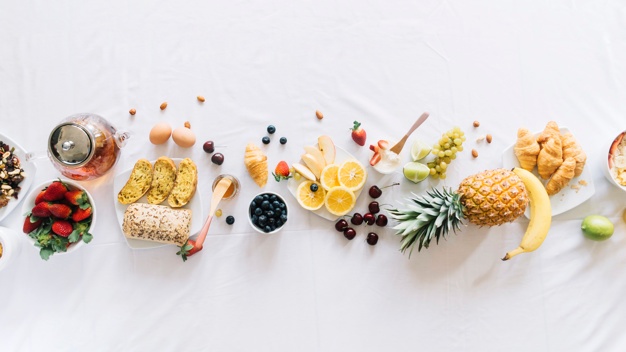New data from the Czech Statistical Office (CZSO) indicates that how and what Czech people eat has changed substantially since the end of communist rule 30 years ago – mostly for the healthier. Photo: Stock picture / Freepik.
Czech Rep., Dec 4 (BD) – Over the past 30 years, the Czech diet has changed, with cereals, pulses, vegetables and fruit becoming gradually more popular, while consumption of milk, meat, potatoes and sugar has decreased. The changes have been driven by socio-economic factors such as price liberalization, real wage growth, more varied food supply on the market and basic changes in diet, lifestyle and self-sufficiency.
The change in eating habits since 1989 has been most significant regarding meat: “Previously, Czechs consumed an average of 30 kg of beef per capita annually, whereas today beef consumption is 8.7 kg. By contrast, consumption of poultry has increased from 13 kg in 1989 to a record 28.4 kg in 2018,” said Marek Rojíček, Chairman of the Czech Statistical Office.
Over the same time, consumption patterns of bakery products have also changed. “In 1989, white bread consumption was 56.8 kg per capita and brown bread was 33.0 kg. These figures have switched; the average consumption of white bread was 39.3 kg in 2018 and brown bread 51.3 kg,” said Renata Vodičková, Head of the Agriculture Statistics Department of CZSO. Between 1989 and 2018, consumption of cow’s milk decreased by 33.5 litres to 57.9 litres per person in 2018. The consumption of fat has also changed; animal fat consumption has declined by 41.3% over the past thirty years, while vegetable fat consumption has increased by 41.6%.
In 2018, food consumption, including lost and wasted food, was 789.7 kg per capita, 17.4 kg less than in 1989. However, highest per capita levels of consumption since monitoring began were recorded for many foods in 2018, including rice (6.6 kg), pasta (8.2 kg), natural cheeses (11.6 kg), other dairy products (34.9 kg), vegetable edible fats and oils (17.7 kg), pulses (3.0 kg), cocoa beans (2.6 kg) and non-chocolate confectionery (3.4 kg).
You can find the detailed results of the research in full here.
Get the news first! Subscribe to our daily newsletter here. Top stories of the day in your mailbox every morning.







